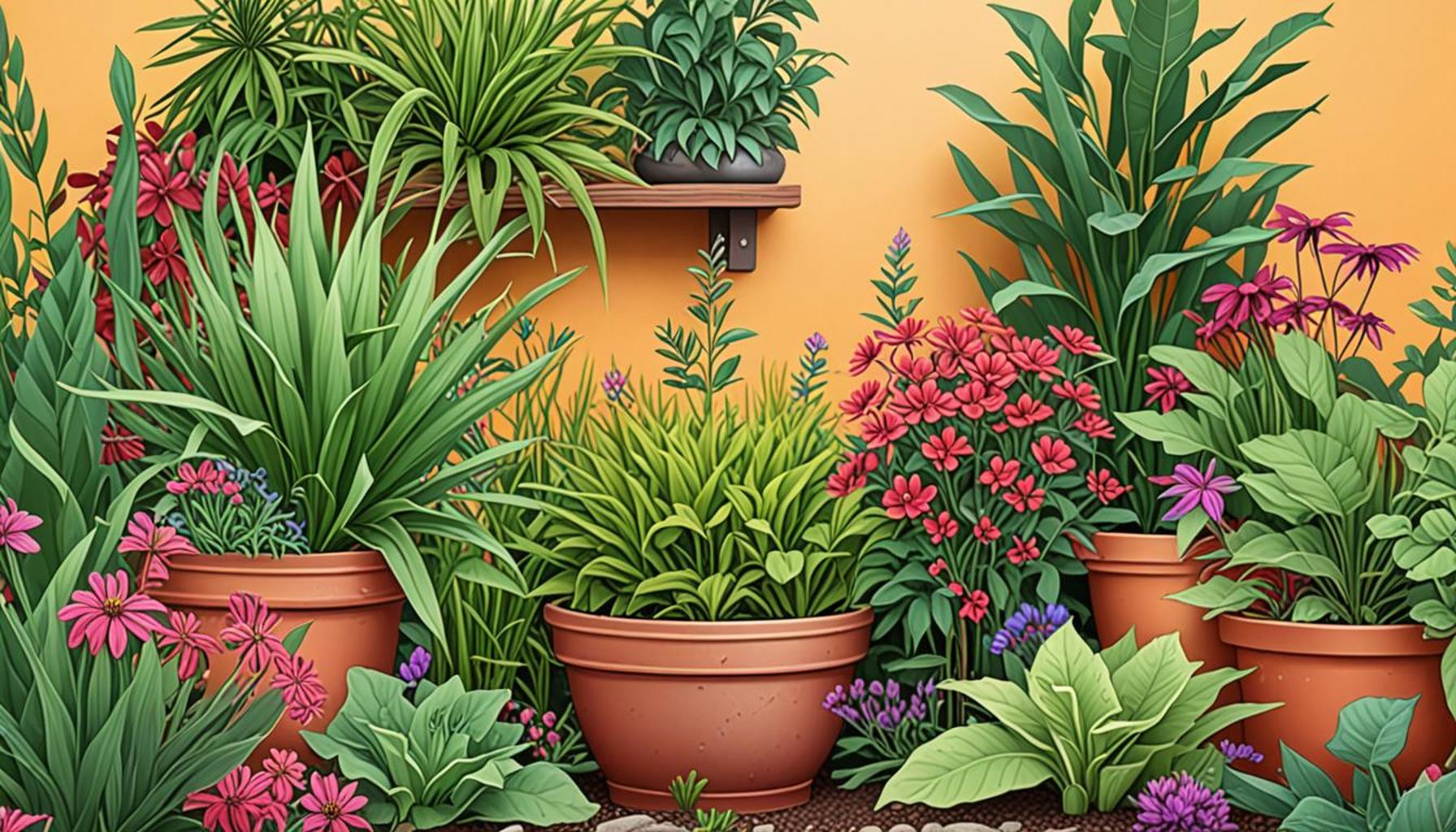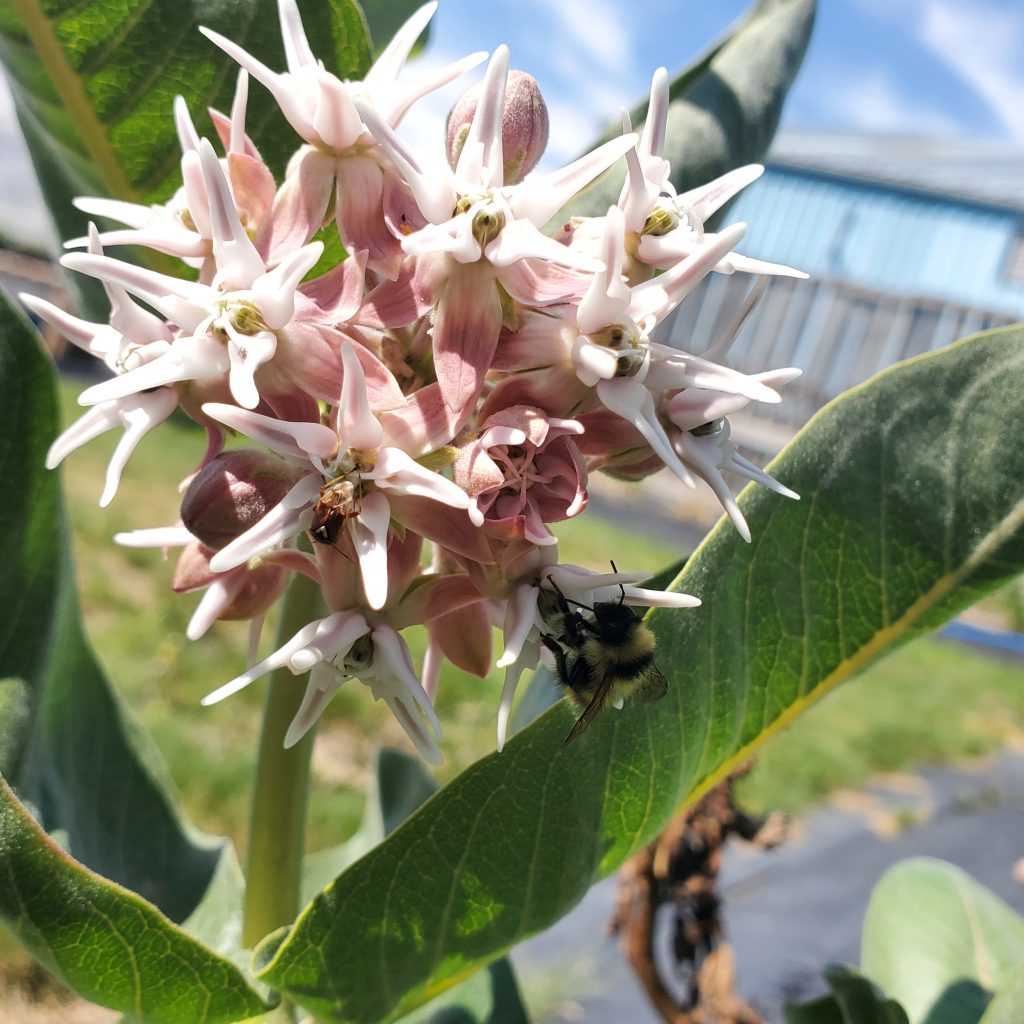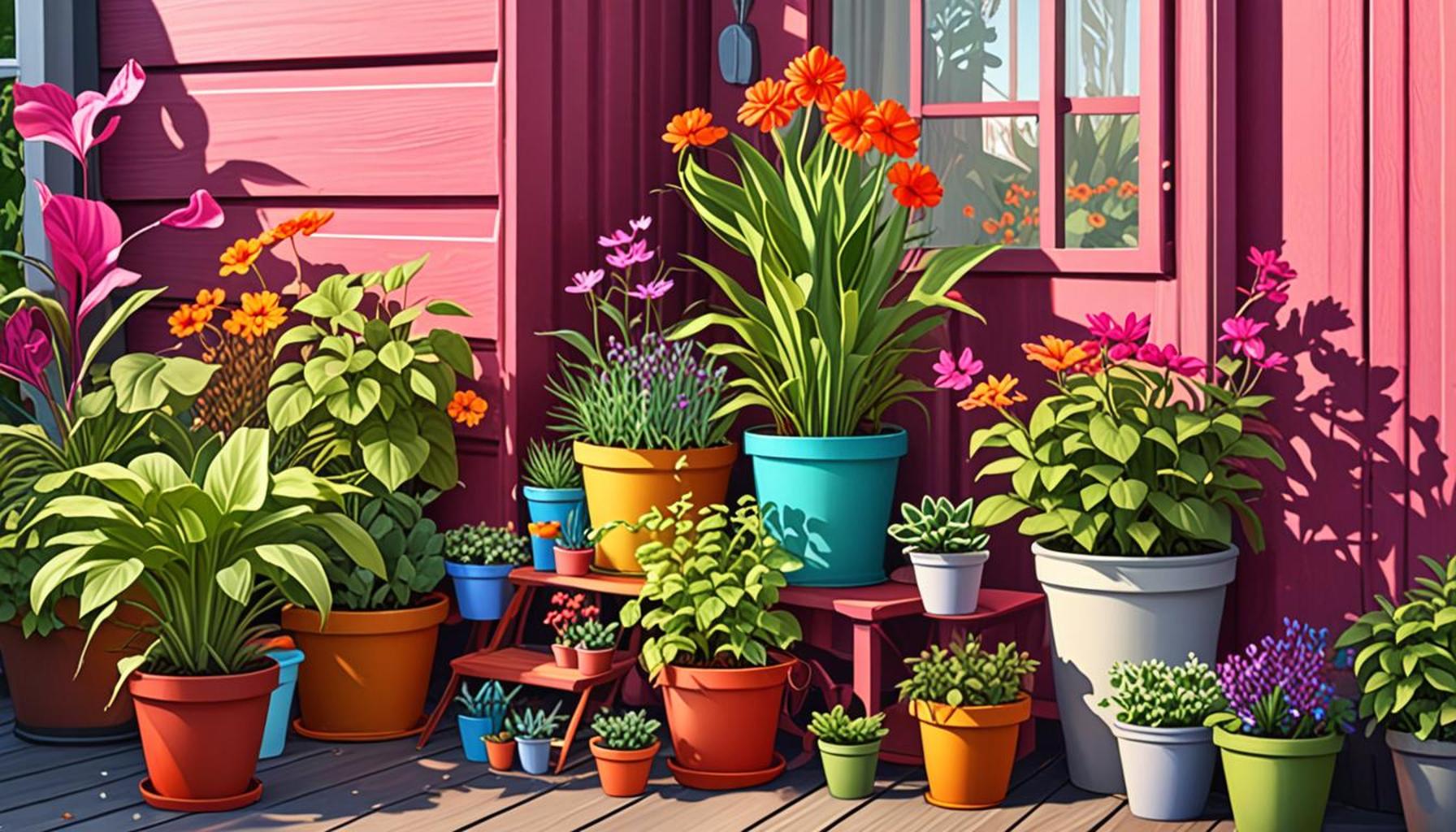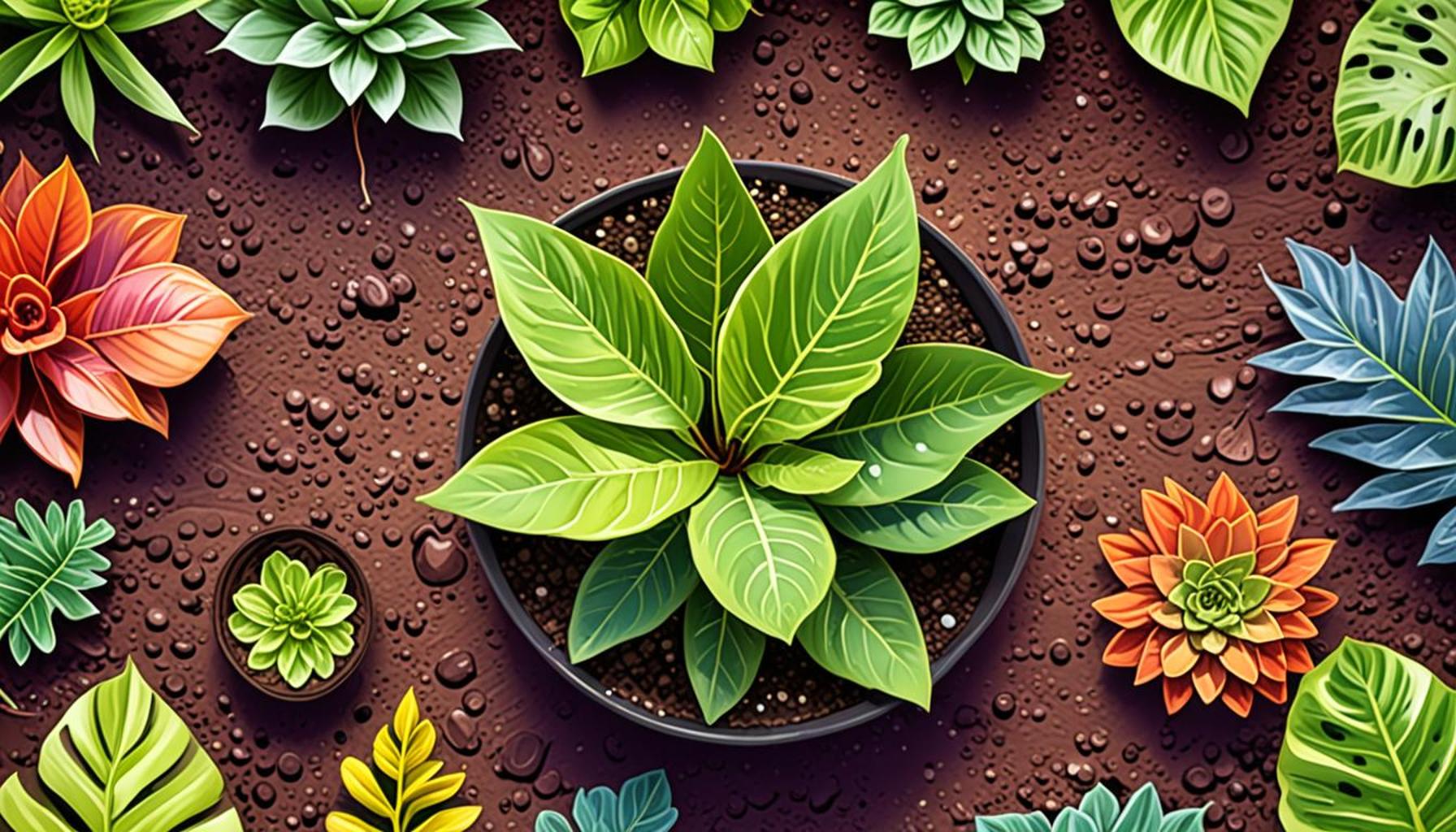Incorporating Native Plants into Your Home Garden: Benefits and Selection Tips

Introduction
Transforming your backyard into a vibrant oasis can be as simple as choosing the right plants. Native plants are a fantastic choice for home gardens, offering a host of benefits that go beyond aesthetics. By incorporating these plants, you support local ecosystems while minimizing maintenance and resource usage.
Many homeowners and gardeners are unaware that native plants have evolved alongside local wildlife, promoting a balanced ecosystem in your garden. The incorporation of these plants does not just enhance the beauty of your outdoor space; it actively contributes to the health of your immediate environment.
Here are some key reasons to consider native plants:
- Ecological Benefits: Native plants provide food and habitat for local wildlife, including pollinators like bees, butterflies, and birds. For example, the Milkweed is essential for the lifecycle of Monarch butterflies, whose populations are declining due to habitat loss. By planting Milkweed, you could be a part of the solution.
- Low Water Requirements: Adapted to regional climates, native plants often need less irrigation once established. In regions like California, drought-resistant native species such as the California Poppy or Manzanita thrive with minimal watering, making them ideal for sustainable gardening practices.
- Disease Resilience: These plants are naturally resistant to local pests and diseases, reducing the need for chemical treatments. This not only saves you money but also creates a healthier environment for pets and children who play in your backyard.
Choosing the right native plants for your garden can enhance its beauty and functionality. Here are some selection tips:
- Research Local Flora: Familiarize yourself with plants native to your region by consulting local gardening guides or extension services. Many states offer resources online that list native plants categorized by climate zones, making it easier to select suitable species.
- Consider Soil and Sun Conditions: Assess the sunlight and soil type in your garden to select plants that will thrive in those conditions. For instance, Black-eyed Susans flourishes in full sun with well-drained soil, making them a popular choice for sunny spots.
- Plan for Seasonal Interest: Incorporate a mix of trees, shrubs, and perennials to ensure year-round beauty in your landscape. Choosing varieties such as Coneflowers for summer and Winterberry Holly for winter can provide visual interest throughout different seasons.
As you explore the world of native plants, you’ll discover how they can breathe new life into your home garden while promoting sustainability. These incredible plants not only enhance aesthetic appeal but also serve as a reminder of the natural beauty that exists within our own backyards. Dive deeper into the myriad benefits and best practices for incorporating these green gems into your outdoor space, and you might find yourself creating a stunning sanctuary that is both beautiful and ecologically responsible.

DISCOVER MORE: Click here for efficient irrigation techniques
Understanding the Advantages of Native Plants
Incorporating native plants into your home garden is not just a trend; it’s a meaningful step towards creating a sustainable and vibrant environment. These plants are uniquely adapted to the local climate and soil conditions, which means they can thrive naturally with minimal extra care. Let’s explore some of the compelling benefits of choosing native species for your outdoor space.
Promoting Biodiversity is one of the most significant advantages of native plants. By cultivating a variety of native species, you can create a sanctuary for local wildlife, including birds, insects, and small mammals. Statistics show that gardens planted with native flora can attract up to 80% more pollinators than those filled with non-native species. This increase in biodiversity is vital for pollination, seed dispersal, and the overall health of the ecosystem.
The role of native plants in water conservation is another reason they are worth considering. Many native plants are drought-resistant, which can be a game-changer for regions prone to water shortages. For instance, the Sumac is celebrated for its ability to survive on minimal rainfall, offering colorful foliage during autumn while maintaining its water-saving benefits. By planting these water-efficient species, you contribute to local conservation efforts and reduce the strain on municipal water systems.
Financial Savings is yet another incentive for integrating native plants into your garden. Because these plants are adapted to the local environment, they often require fewer fertilizers, pesticides, and less water than non-native alternatives. Studies indicate that homeowners can save approximately $100 annually on gardening supplies by switching to native plants. This not only eases the financial burden but also minimizes harmful chemicals from leaching into local waterways.
Environmental Contributions
Incorporating native plants also plays a crucial role in mitigating the impacts of climate change. These plants help in absorbing carbon dioxide and improving air quality through natural photosynthesis processes. Furthermore, many native species possess deep root systems that enhance soil health and prevent erosion, creating a stable landscape that can withstand heavy rainfall and flooding. This is particularly important in regions facing extreme weather patterns.
For gardeners interested in wildlife conservation, native plants serve as host species. For example, the Goldenrod not only provides nectar to pollinators but also hosts several caterpillar species, essential for the lifecycle of butterflies. By planting such species, you’re not just beautifying your yard; you’re fostering a habitat that supports the delicate balance of nature.
With these various advantages in mind, it’s clear that native plants are a smart choice for any home garden. As you consider which plants to incorporate, keep in mind the role these species can play in enriching biodiversity, conserving water, saving money, and contributing positively to the environment. The next step is to delve into how to select the right native plants for your specific gardening conditions.
Reasons to Choose Native Plants
Incorporating native plants into your home garden not only contributes to local ecology but also enhances the overall quality of your gardening experience. One compelling advantage of selecting native species is their remarkable adaptability to the local climate and soil conditions. Native plants are inherently suited to thrive in the environment where they evolved, which means they require less water, fewer fertilizers, and less maintenance compared to exotic varieties. As a result, they become a sustainable choice for environmentally conscious garden enthusiasts.Another significant benefit is their role in supporting biodiversity. Native plants provide essential habitats for various wildlife, including pollinators like bees and butterflies, which are critical for maintaining healthy ecosystems. By fostering a garden rich in native flora, you create a sanctuary for these valuable species while helping to combat the decline in pollinator populations.Moreover, native plants often possess natural resistance to local pests and diseases, which can drastically reduce the need for chemical interventions in your garden. This not only benefits your plants but also contributes to a healthier surrounding environment. By minimizing pesticide use, your gardening practices can become a model of sustainability, encouraging others to follow suit.
Selection Tips for Native Plants
When it comes to choosing the right native plants for your garden, it’s essential to consider various factors. Start by researching which species are indigenous to your specific region. Local extension services or native plant societies can provide valuable resources and guidance on selecting plants suited to your area.It’s also crucial to assess your garden’s conditions, such as sunlight, soil type, and drainage. Different native species may thrive under varying conditions. For instance, some plants prefer shaded areas, while others thrive in full sunlight.Creating a diverse planting scheme enhances the aesthetic appeal and supports a broader range of wildlife. Try to include a mix of perennials, annuals, and shrubs while varying heights and bloom times for continuous color throughout the seasons.Consider visiting local nurseries that specialize in native plants, as they can offer expert advice and healthy stock. By investing time in understanding and selecting native plants, you can enjoy a thriving garden that is both beautiful and beneficial to the local ecosystem.
DISCOVER MORE: Click here to uncover effective pest deterrents
Choosing the Right Native Plants for Your Garden
After understanding the myriad benefits of incorporating native plants into your home garden, the next crucial step is to select the types that will thrive in your unique environment. With thousands of native species across the United States, the options can be overwhelming. However, by focusing on your local climate, soil type, and personal gardening goals, you can make informed choices that enhance both your garden and the local ecosystem.
Assess Your Local Environment
Before diving into plant selection, it’s important to conduct an assessment of your garden’s environmental conditions. Start by identifying your USDA Plant Hardiness Zone, which tells you what plants will survive in your area’s climate. Resources like the USDA Hardiness Zone Map are readily available online and can guide you in choosing species that can withstand the typical temperatures in your region.
Next, consider your soil type. Is it sandy, loamy, or clay-heavy? Different native plants have specific soil preferences, so understanding your garden’s foundation is key. For instance, if you have well-drained, sandy soil, you might consider planting Black-eyed Susans or Butterfly Weed, both of which are resilient in such conditions. Conversely, if your soil retains moisture, species like Joe-Pye Weed are ideal candidates.
Creating Diverse Ecosystems
When selecting native plants, aim for biodiversity. Planting a mix of perennials, grasses, and shrubs can create a dynamic garden that attracts various wildlife. Include plants that bloom at different times throughout the growing season to ensure a continual supply of nectar for pollinators. Consider adding Bee Balm for summer blooms and Asters for fall flowers, as these provide habitat and food for butterflies, bees, and other beneficial insects.
- Grasses: Native grasses such as Little Bluestem and Big Bluestem not only add texture but also provide shelter for small animals.
- Perennials: Look for options like Purple Coneflower and Blazing Star, which thrive with little maintenance and attract pollinators.
- Shrubs: Consider Serviceberry or American Hazelnut for fruit-bearing options that support local wildlife.
Where to Source Native Plants
Finding native plants is easier than you might think. Many local nurseries and garden centers now offer a range of native options. Additionally, visiting native plant sales conducted by conservation groups can yield great bargains while supporting local biodiversity efforts. Websites like PlantNative or the National Wildlife Federation also have resources and lists of native plants specific to different regions. Engaging with local gardening groups or clubs can provide further advice and tips, and possibly connect you with sources of locally grown plants.
For those DIY enthusiasts, propagating native plants from seeds can be a rewarding project. Not only does this save money, but it also allows you to grow local cultivars that are well-suited to your garden’s conditions. Just be sure to collect seeds from native plants responsibly and ethically.
By taking the time to assess your environment and selecting a variety of native plants, you set the stage for a thriving garden that benefits not just your home but also the surrounding ecosystem. Embracing this thoughtful approach will make your garden a haven for wildlife and a beautiful space for you and your family to enjoy.
LEARN MORE: Click here to dive deeper
Conclusion
Incorporating native plants into your home garden is not only a sustainable choice but also a transformative journey toward creating a vibrant ecological sanctuary. As we’ve explored, these plants offer a multitude of benefits, ranging from reduced maintenance needs to promoting local biodiversity. By carefully selecting the right native species for your climate and soil conditions, you can enhance your garden’s resilience while supporting vital wildlife like the pollinators that play a crucial role in our ecosystem.
Additionally, sourcing native plants has never been easier, with local nurseries and online resources at your fingertips. Engaging with gardening communities can provide valuable insights and foster connections that enrich your gardening experience. As you delve into the world of native gardening, consider not just the aesthetic aspects but also how your choices contribute to a larger environmental mission.
Ultimately, embracing native plants invites a sense of responsibility and excitement into your gardening endeavors. By focusing on diversity, seasonal blooms, and natural partnerships with local wildlife, you create a thriving habitat that reflects the beauty and resilience of nature. In this journey to cultivate your own green oasis, you become an integral part of a flourishing ecosystem that nourishes both your home and the surrounding environment.
So grab your shovel, explore local resources, and embark on the rewarding path of transforming your garden into a haven for both plants and wildlife alike.



